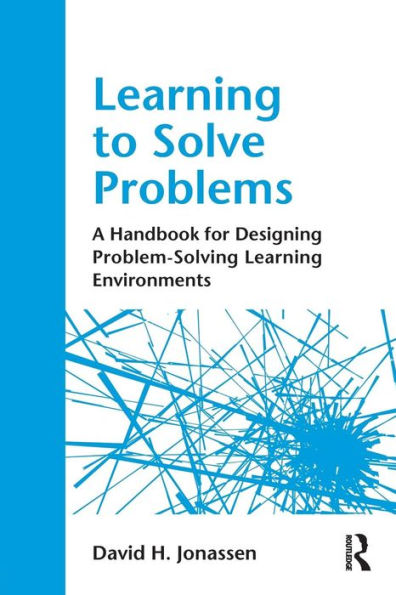- Teaching Focus – The book is not merely a review of research. It also provides specific research-based advice on how to design problem-solving learning environments.
- Illustrative Cases – A rich array of cases illustrates how to build problem-solving learning environments. Part two introduces six different functions of cases and also describes the parameters of a case.
- Chapter Integration – Key theories and concepts are addressed across chapters and links to other chapters are made explicit. The idea is to show how different kinds of problems, cases, skills, and assessments are integrated.
- Author expertise – A prolific researcher and writer, the author has been researching and publishing books and articles on learning to solve problems for the past fifteen years.
This book is appropriate for advanced courses in instructional design and technology, science education, applied cognitive psychology, thinking and reasoning, and educational psychology. Instructional designers, especially those involved in designing problem-based learning, as well as curriculum designers who seek new ways of structuring curriculum will find it an invaluable reference tool.
- Teaching Focus – The book is not merely a review of research. It also provides specific research-based advice on how to design problem-solving learning environments.
- Illustrative Cases – A rich array of cases illustrates how to build problem-solving learning environments. Part two introduces six different functions of cases and also describes the parameters of a case.
- Chapter Integration – Key theories and concepts are addressed across chapters and links to other chapters are made explicit. The idea is to show how different kinds of problems, cases, skills, and assessments are integrated.
- Author expertise – A prolific researcher and writer, the author has been researching and publishing books and articles on learning to solve problems for the past fifteen years.
This book is appropriate for advanced courses in instructional design and technology, science education, applied cognitive psychology, thinking and reasoning, and educational psychology. Instructional designers, especially those involved in designing problem-based learning, as well as curriculum designers who seek new ways of structuring curriculum will find it an invaluable reference tool.

Learning to Solve Problems: A Handbook for Designing Problem-Solving Learning Environments
472
Learning to Solve Problems: A Handbook for Designing Problem-Solving Learning Environments
472Paperback(New Edition)

Product Details
| ISBN-13: | 9780415871945 |
|---|---|
| Publisher: | Taylor & Francis |
| Publication date: | 09/07/2010 |
| Edition description: | New Edition |
| Pages: | 472 |
| Product dimensions: | 5.90(w) x 8.90(h) x 1.10(d) |
